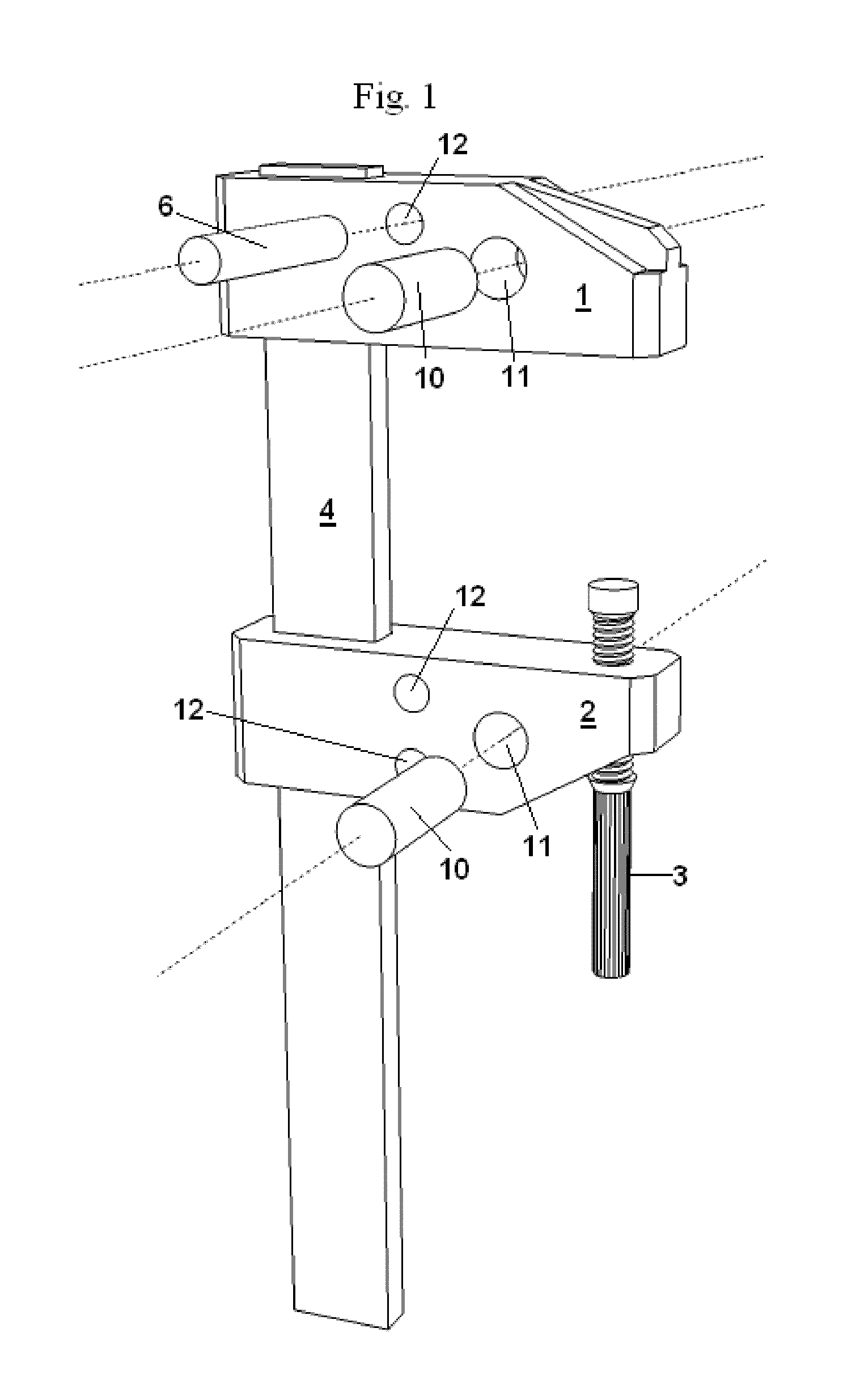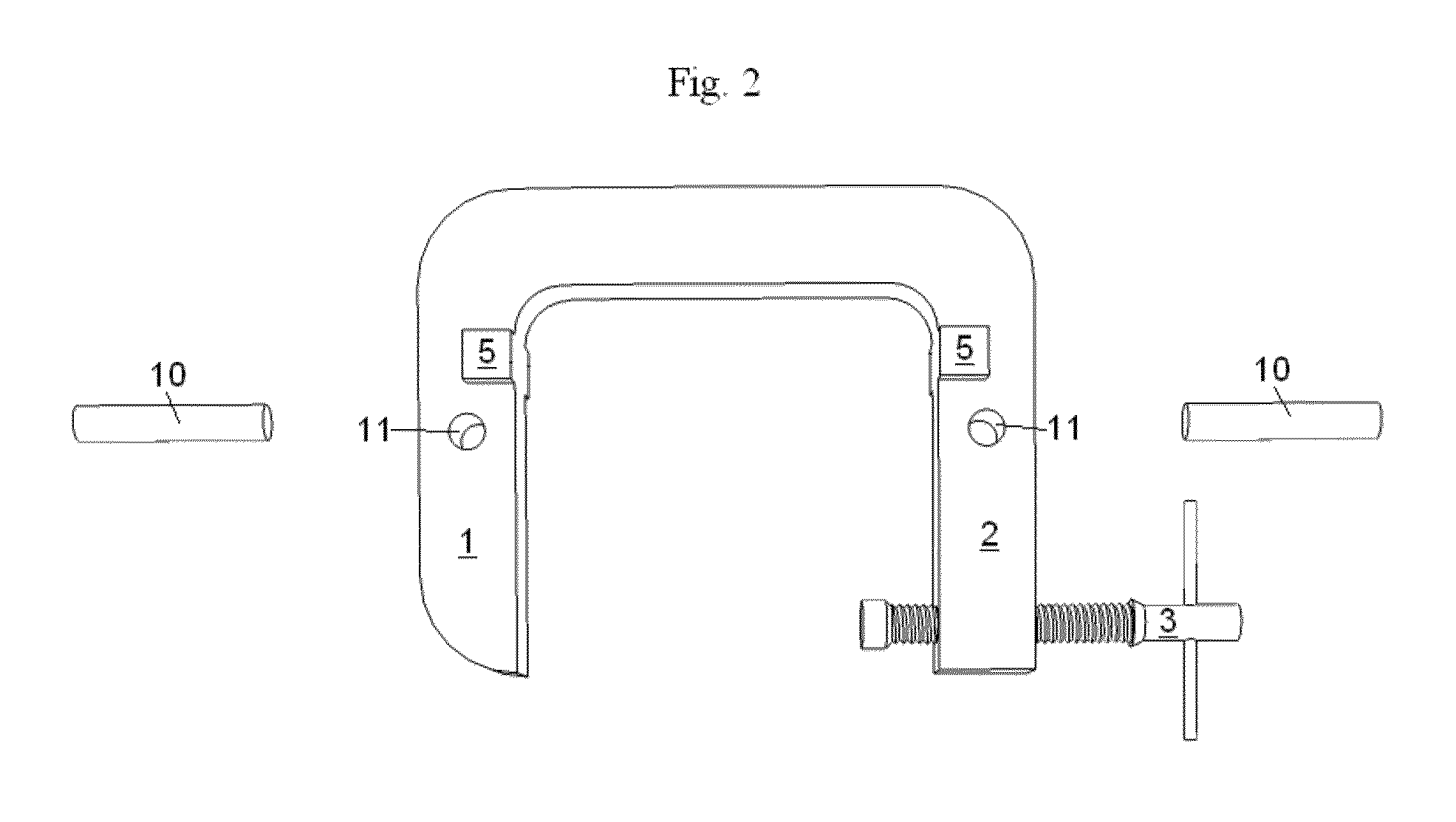Interlocking clamp
a clamp and clamping technology, applied in the field of clamping clamps, can solve the problems achieve the effects of increasing setup time, and reducing the number of clamping parts
- Summary
- Abstract
- Description
- Claims
- Application Information
AI Technical Summary
Benefits of technology
Problems solved by technology
Method used
Image
Examples
Embodiment Construction
[0024]This invention consists of several improvements to of bar and c-clamps, allowing them to connect to each other in such a way as to fix the geometry between clamps. Both bar and c-clamps have a head and a foot between which one or more workpieces are clamped. It is to and between these parts of the clamps that this invention is applied. As such, the invention can be used to improve many of the numerous types of bar and c-clamps, whose previous various innovations are primarily concerned with locking mechanisms used to immobilize the head and foot relative to each other along the clamping axis.
[0025]Referring to FIG. 1, the basic elements of an F-type bar clamp include 1 the head of the clamp, 2 the foot of the clamp, 3 a tensioning mechanism that permits the exertion of a compressive force perpendicular to the head 1 and foot 2 of the clamp, in this example a screw and handle, and 4, a bar or connecting structure along which one or both of the head and foot may move. Commonly i...
PUM
 Login to View More
Login to View More Abstract
Description
Claims
Application Information
 Login to View More
Login to View More - R&D
- Intellectual Property
- Life Sciences
- Materials
- Tech Scout
- Unparalleled Data Quality
- Higher Quality Content
- 60% Fewer Hallucinations
Browse by: Latest US Patents, China's latest patents, Technical Efficacy Thesaurus, Application Domain, Technology Topic, Popular Technical Reports.
© 2025 PatSnap. All rights reserved.Legal|Privacy policy|Modern Slavery Act Transparency Statement|Sitemap|About US| Contact US: help@patsnap.com



